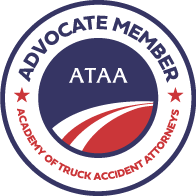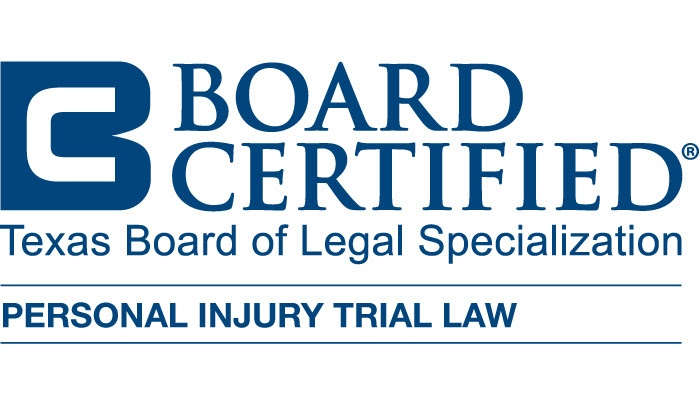Welcome to the Willumsen Law Firm blog, where we aim to demystify the legal process and empower our clients with the knowledge they need to navigate their personal injury cases successfully. Today, we’re addressing a common question many clients have after reaching a settlement in their personal injury lawsuit: “how do I track my settlement check?”
Understanding the journey of your settlement check from the moment the agreement is reached to when it arrives in your hands is crucial. This not only ensures transparency but also helps manage expectations regarding the timing and process involved. In this blog post, we will guide you through the steps involved in tracking your settlement check, explain the typical timelines, and offer tips on what you can do to facilitate a smooth transaction. Whether you are anxiously awaiting closure or just want to be informed about the next steps, this post will provide you with the necessary insights to understand how your settlement check is processed and when you can expect to receive it.


What is a Settlement?
In the context of personal injury law, a settlement is an agreement between the injured party (plaintiff) and the party alleged to be responsible for the injury (defendant) or their insurer to resolve a claim without the need for a trial. This agreement usually involves the defendant or their insurer agreeing to pay a certain amount of money to the plaintiff. In return, the plaintiff agrees to release the defendant from further liability concerning the claim.
The Process of Reaching a Settlement
The process of reaching a settlement in personal injury cases unfolds through a series of well-defined steps:
Initially, the evaluation of the claim takes place. After sustaining an injury, either the injured individual or their lawyer will review the damages incurred and compile supporting evidence, such as medical records, statements from witnesses, and expert assessments. This stage is critical as it lays the foundation for subsequent negotiations.
Following the evaluation, the plaintiff’s attorney drafts a demand letter to the defendant or their insurer. This letter details the nature of the injury, supports it with the gathered evidence, and specifies the compensation sought. This marks the beginning of formal negotiations.
Negotiations then ensue, where the defendant—often represented by an insurance company—may counter the initial demand if deemed excessive. This phase involves a back-and-forth exchange where both parties present evidence and argue the legitimacy of the claim and the extent of the damages.
Should negotiations reach an impasse, mediation might be the next step. During mediation, a neutral third party, the mediator, assists both sides in understanding each other’s viewpoints and exploring potential settlement terms. It’s important to note that the mediator does not resolve the case but facilitates discussions.
Once an agreement is reached, a settlement agreement is drafted, capturing the terms of the settlement, including the agreed compensation and conditions for liability release. This document requires the signatures of all involved parties.
The final step involves the payment. After the settlement agreement is signed, the defendant or their insurer processes the agreed-upon payment. The funds may be delivered as a lump sum or through structured payments, depending on the negotiated terms. This concludes the settlement process.
Benefits of Settling a Personal Injury Claim
Settling a personal injury claim offers numerous advantages compared to enduring a trial. One of the primary benefits is the certainty of outcome. A settlement ensures a resolution is reached, avoiding the unpredictability of a trial verdict. Moreover, it provides both parties the opportunity to negotiate and agree on the terms, giving them more control over the outcome than a trial, where the decision rests in the hands of a judge or jury.
Another significant advantage of settling is the reduction in legal costs. By avoiding prolonged litigation, parties can save on expenses that would otherwise escalate. Additionally, settlements offer privacy, as opposed to trials which are typically public. This can be particularly valuable for those seeking discretion in their legal matters.
The process is also much faster than going through a trial. This speed allows the injured party to receive compensation more quickly, alleviating financial and emotional strain. Settlements are, therefore, a crucial aspect of efficiently resolving personal injury claims, and understanding this process enables injured parties to make well-informed decisions on how to proceed with their claims.
Options for Settlement Payment
Before asking yourself “how do I track my settlement check” you and your attorney will first figure out how said check is structured. Settlements in personal injury cases can be paid out through several different methods, each with its own advantages and considerations:
Lump-Sum Payment
A lump-sum payment is the most straightforward method of settlement payout. It involves the defendant paying the entire agreed-upon amount at one time. Receiving all the money at once allows the plaintiff to cover large expenses immediately, such as medical bills, rehabilitation costs, and any debt accumulated due to the injury. It also closes out the case completely, allowing the plaintiff to move on without ongoing negotiations or payments.
However, managing a large sum of money requires careful planning to ensure that the funds last, especially if the injury has long-term financial implications.
Structured Settlement
A structured settlement distributes the payment through a series of installments over a period of time, which can range from several years to a lifetime. This method provides a steady income stream, which can be helpful for long-term financial stability and managing ongoing medical expenses. It can also reduce the tax burden, as the total amount received in any given year may be lower.
While providing security, structured settlements are less flexible than lump-sum payments. Once the terms are set, it can be difficult to adjust them should your financial needs change.
Combination of Lump-Sum and Structured Settlement
In some cases, parties may agree to a combination of both payout options. The plaintiff might receive a portion of the settlement as a lump sum to address immediate needs, with the remainder paid out in structured installments. This option provides immediate financial relief while also securing future income — but requires careful balancing to determine how much money should be received upfront versus distributed over time.
Legal and Financial Considerations
Once a settlement is reached, it’s imperative to carefully assess both the legal and financial dimensions of the chosen payout method. It is advisable to seek guidance from a personal injury attorney who can clarify the legal implications of each payout option and ensure it aligns with your broader financial goals. Additionally, consulting with a financial advisor is beneficial, particularly for managing substantial settlements or structured payouts. This professional can assist in effectively planning and utilizing the settlement funds, safeguarding your financial future.
Related Videos
Choosing a Personal Injury Attorney
Types of Compensation in a Truck Accident Claim
How do I Track My Settlement Check?
First, reach out to your attorney or the settlement agent handling your case. They should provide you with an update on the status of the settlement check, including when it was issued or when it is expected to be issued.
Settlement checks can take some time to be processed and sent out. Typically, after a settlement is agreed upon, the insurance company will send the settlement funds to your attorney’s office. The attorney then processes the funds, which may include paying off any liens (like medical bills) and deducting legal fees. This process can take several weeks.
Once you receive the check, keep in mind that banks typically have a clearance period before the funds are fully available. This period can vary but is usually around 7-10 days for larger amounts.
If the settlement check is being mailed, ask your attorney if it’s possible to use a mailing service that includes tracking information. This allows you to track the check’s delivery status.
Once the check is mailed, keep in touch with your attorney or the party sending the check to confirm when it’s expected to arrive. If there is a delay or if the check does not arrive by the expected date, notify your attorney immediately.
Keep records of all communications regarding your settlement check. This includes saving emails, making notes of phone conversations, and keeping any postal receipts.
By following these steps, you can effectively track your settlement check and ensure you are fully informed about the status of your funds.
My focus is to give a voice to families who have suffered a wrongful death or a serious injury to a family member caused by an 18-Wheeler, commercial truck, or a drunk driver. Contact us today, we can help you.Helping Injury Victims for Over 25 Years
Getting the Compensation You Deserve
Tracking your settlement check is a critical step in the closure of your personal injury case. By staying in close communication with your attorney, understanding the expected timelines, and using available tracking tools, you can ensure that you receive your funds promptly and securely. Remember, the processing and delivery of settlement checks can vary, but by following these guidelines, you can effectively manage and anticipate the arrival of your settlement funds.
If you are navigating a personal injury lawsuit, do not hesitate to contact Willumsen Law Firm. Our experienced team is dedicated to guiding you through every step of the process, ensuring that you receive the support and representation you deserve. Reach out to us today to learn how we can help you secure the best possible outcome for your case.



